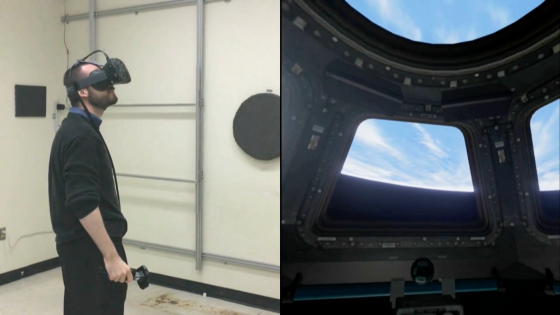New mixed reality training methods cut costs and improve the astronaut training process.
By Johan Keyter
Space exploration and human spaceflight in particular remains one of the most challenging technological hurdles that we face as a species. It may seem like we’ve gotten the hang of things thanks to efforts such as the International Space Station (ISS), which has been continuously inhabited since the year 2000. Even so, only 536 individuals (from a sample of more than 7 billion) have ever made it to space.
The immense costs of getting into space notwithstanding, it takes many years of training and a lot of funding to prepare someone for spaceflight. Now NASA is working with the creators of the popular Unreal Engine game development environment to create a virtual reality (VR) training experience for budding astronauts.
The so-called “mixed reality” system includes a fully realized VR replica of the ISS created in Unreal Engine 4. A consumer-grade VR headset can be used to interact with the environment, while NASA’s ‘Response Gravity Offload System’ (a robotic crane) is used to simulate different levels of microgravity.

Matthew Noyes, a NASA software engineer working on the project stated, “NASA is always interested in how cutting-edge technology could help our programs. Creating a truly immersive experience for astronauts is a lot like creating a game. With Unreal Engine, we’ve created a completely immersive, three-dimensional, mixed reality training and development environment that is incredibly lifelike. In basic terms, that means we can put our crew in space while they’re still on earth.”
The ability to train astronauts in VR obviously greatly cuts down on costs, and can also serve to improve the quality and realism of current training methods. Director of Unreal Engine Enterprise, Simon Jones is optimistic about the future of wider VR applications stating that, “organizations across a range of sectors are now looking at how they can embed VR within their engineering information strategy. So what started life as a high-end computer gaming technology has developed to become an application that accelerates innovation, drives new technology and creates incredible new opportunities.”

While NASA’s mixed reality system includes specialized props, physical room models, and the aforementioned robotic crane, armchair astronauts can also get a taste of space travel thanks to other NASA collaborations such as Mission: ISS and the upcoming Mars 2030 (also being developed in the Unreal Engine).
Video showcasing the training procedures and VR simulation of the ISS in Unreal Engine 4. (Source: Unreal Engine)
Johan Keyter is a technology journalist and research scientist on the use of game technology beyond gaming.





